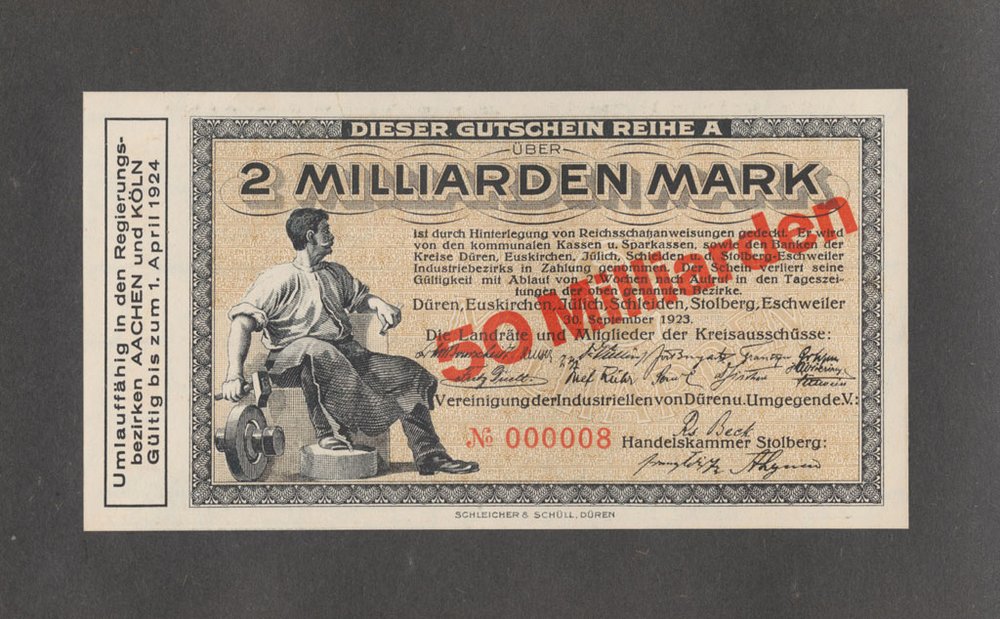German bank notes

German bank notes illustrating hyperinflation. 1923.
Before the First World War, Germany had been a stable and prosperous country with a gold-backed currency. The German mark held about equal value with the British shilling, the French franc, and the Italian lira, and exchanged four or five to the U.S. dollar. Expecting that the Great War would be brief, the German government abandoned the gold standard in 1914 and financed the war through borrowing, rather than saving and taxation. Four years later, the war had been lost; the Allies demanded gold-backed reparation payments in the Treaty of Versailles; and the cost of domestic goods was rising.
Political instability, a complete lack of consumer confidence, and industrial lobbying caused an unprecedented cycle of currency printing, inflation, and price jumps. Savings were rendered worthless, and a lifelong pension could barely buy a loaf of bread. Hard work and saving no longer secured a comfortable life, and the social fabric of Germany frayed, with fear and theft running rampant. In November 1923, one U.S. dollar was equal to one trillion marks, signaling the complete breakdown of Germany’s currency. New leadership at Germany’s national bank re-stabilized the financial system, but the damage to German society was done – helping make it possible for the fledgling Nazi party to come to power.
Link: PBS Commanding Heights – The German Hyperinflation, 1923